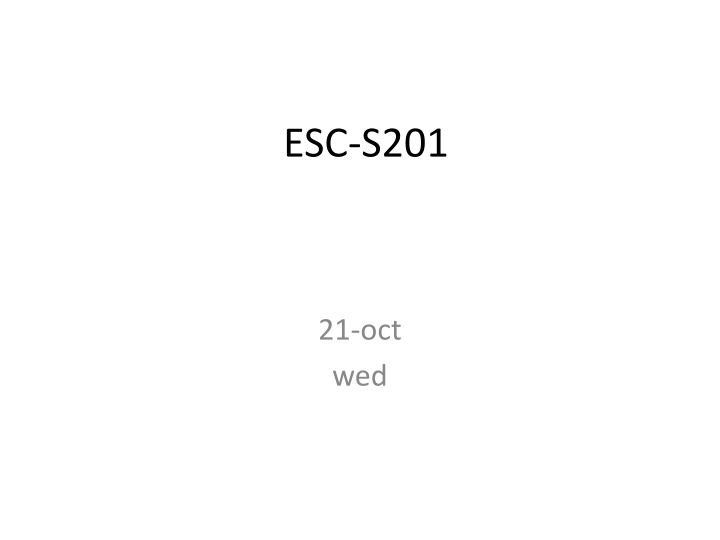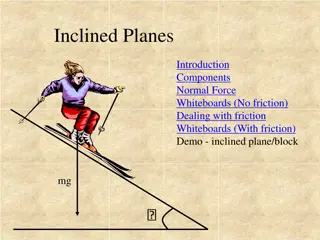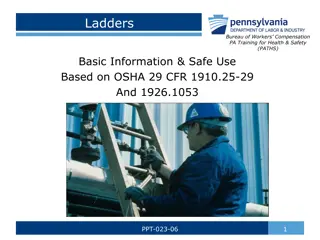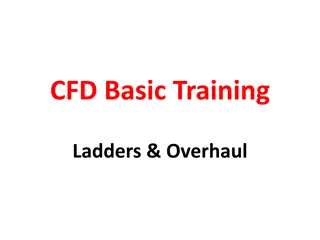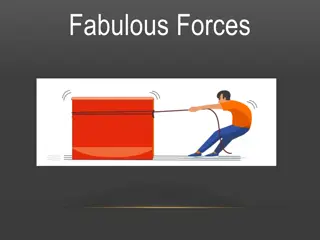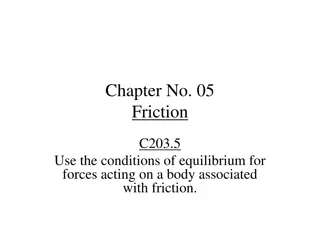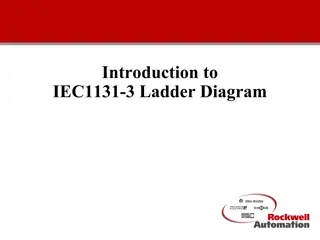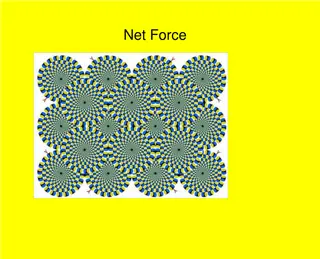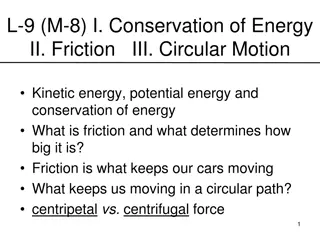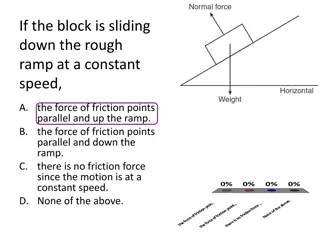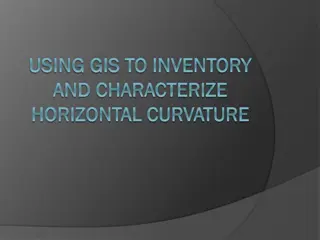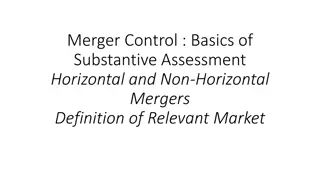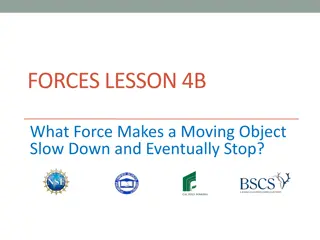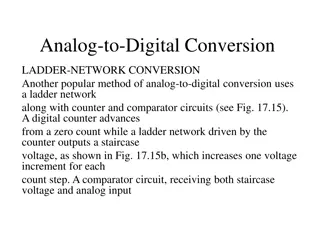Solving Ladder Friction Problem with Horizontal Force Calculation
In this scenario, a ladder of specific dimensions and weights is analyzed for static equilibrium. The task involves determining the minimum horizontal force required at a particular point to prevent slipping. The solution process includes drawing free body diagrams, considering moments equilibrium, analyzing friction forces, and calculating the necessary horizontal force. By following the step-by-step approach illustrated in the problem, one can grasp the application of physics principles in practical situations.
Download Presentation

Please find below an Image/Link to download the presentation.
The content on the website is provided AS IS for your information and personal use only. It may not be sold, licensed, or shared on other websites without obtaining consent from the author.If you encounter any issues during the download, it is possible that the publisher has removed the file from their server.
You are allowed to download the files provided on this website for personal or commercial use, subject to the condition that they are used lawfully. All files are the property of their respective owners.
The content on the website is provided AS IS for your information and personal use only. It may not be sold, licensed, or shared on other websites without obtaining consent from the author.
E N D
Presentation Transcript
ESC-S201 21-oct wed
Ladder problem 3. A ladder of length 4 m weighing 200 N is placed against a vertical wall. The coefficient of friction between the wall and the ladder is 0.2. and that between the floor and the ladder is 0.3.The ladder in addition to its own weight has to support a man weighing 600 N. at a distance of 3m from A. Calculate the minimum horizontal force to be applied at A to prevent slipping. 600 N B AB = 4 m C G AG = 2 m AC = 3 m 600 200 N P A AIM: Pmin = ??
Ladder problem Step-1 o DRAW FREE BODY DIAGRAM OF LADDER
Ladder problem Step-1 o DRAW FREE BODY DIAGRAM OF LADDER o Velocity direction of point A and B. 600 N B NB VB Fs2 600 200 N P A Fs1 VA NA At the time of slipping direction of velocity of point A and B are shown in above figure.
Ladder problem Step-2 o Moment equilibrium about point A
Ladder problem o Moment equilibrium about point A 1. Moment due to Normal force NB about point A. = Force x perpendicular distance from A to line of action of force NB 600 N B X NB 200 N C G Fs2 300 600 = NB x AX P Y A Fs1 AB = 4 m AG = 2 m AC = 3 m = NB x AB * Cos( 300 ) NA = NB x 4 * Cos( 300 ) = Fs2 x 4 x 0.5. Direction: Anticlockwise direction. Direction : Anticlockwise moment 2. Moment due to Friction force Fs2 about point A. = Force x perpendicular distance from A to line of action of force Fs2 = Fs2 x AY = Fs2 x AB Cos ( 600)
Ladder problem o Moment equilibrium about point A 3. Moment due to 600 N force act at point C about point A. 600 N B X NB 200 N C G Fs2 300 = Force x perpendicular distance of line of action of force 600 N from A. 600 P Y Z M A Fs1 AB = 4 m AG = 2 m AC = 3 m = 600 N x AZ NA = 600 N x 3 * Cos ( 600 ) m = 200 N x AM = 900 N m = 200 N x AG * Cos( 600) Direction : Clockwise moment = 200 N x 2 * 0.5 m 4. Moment due to 200 N force act at point G about point A. = 200 N m = Force x perpendicular distance of line of action of force 200N from A. Direction : Clockwise moment
Friction problem o Moment equilibrium about point A 4 * NB * Cos( 300 ) (ACW) + 2 * Fs2 ( ACW) + 900 (CW) + 200 (CW) = 0 Take anti clockwise moment as positive. 4 * NB * Cos( 300 ) + 2 * Fs2 - 900 - 200 = 0 4 * NB * Cos( 300 ) + 2 * Fs2 = 1100 At the time of slipping friction force Fs2 = B x NB 4 * NB * Cos( 300 ) + 2 * B * NB = 1100 B NB ( 4*Cos ( 300 ) + 2 * B ) = 1100 NB ( 4*0.866 + 2 * 0.2 ) = 1100 B NB ( 3.864) = 1100 600 A NB = 284.7 N B = Coefficient of friction between vertical wall and rod
Friction problem NB = 284.7 N 600 N NB = 284.7 N Fs2 = B * NB Fs2 = 56.94 N Fs2 = 0.2 * 284.7 N 600 Fs2 = 56.94 N Step- 3 o Force equilibrium about horizontal direction. 200 N P Fs1 NA P + Fs1 = NB NA - 200 600 + Fs2 = 0 P + A NA = 284.7 N NA - 200 600 + 56.94 = 0 P + 0.3 NA = 284.7 N - - - - - - (1) NA = 743.06 N Step-4 o Force equilibrium about vertical direction By equation (1) P + 0.3 NA = 284.7 N NA - 200 600 + Fs2 = 0 P + 0.3*743.06 N = 284.7 N
Friction problem P + 0.3*743.06 N = 284.7 N 600 N P = 61.78 N NB = 284.7 N Fs2 = 56.94 N 600 200 N P Fs1 NA
